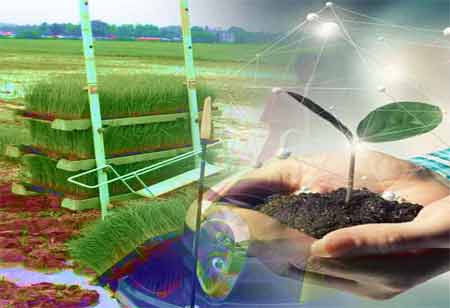Thank you for Subscribing to Agri Business Review Weekly Brief
Value of Vertical Farming
Before discussing the advantages of vertical farming, it may be useful to define vertical farming and explain how it differs from conventional farming.

By
Agri Business Review | Monday, January 02, 2023
Stay ahead of the industry with exclusive feature stories on the top companies, expert insights and the latest news delivered straight to your inbox. Subscribe today.
Vertical farms grow plants indoors in layers using LED lighting and controlled growing systems.
FREMONT, CA: Before discussing the advantages of vertical farming, it may be useful to define vertical farming and explain how it differs from conventional farming. Vertical farming occurs when crops are cultivated in layers that are piled vertically. Vertical farming techniques are often one of two methods: hydroponic (plants are grown in nutrient-rich water instead of soil) or aeroponic (plants are grown without earth) (plants are sprayed with nutrient-rich water).
There are numerous advantages to applying this form of indoor farming, a few of which are discussed here.
Vertical Farming Enables Year-Round Consistent Crop Production
Vertical farming offers a more consistent crop output because it is less susceptible to bad weather conditions. This avoids crop losses and crop damage by increasing environmental control and management. Since farmers can rely on consistent agricultural yields, they can keep up with demand and confirm supplies.
Less Required Space or Square Feet
Outdoor agriculture can necessitate huge acreage and cultivable terrain. However, stacking your crops and employing a vertical farming technique permits expansion upward, resulting in increased yield in a smaller space. This form of farming consumes 99.99 percent less land than traditional outdoor farming. Depending on the crops being grown, one vertical farm can be equivalent to as many as twenty acres for soil-based agriculture.
Requiring less space is helpful in locations with limited and expensive land, such as urban areas. Since a hydroponic farm does not require rich soil, it is possible to grow healthy food in regions with hard climates or poor soil quality.
When most people consider a vertical farm, the image that comes to mind is of layers of crop growth ascending. However, a deep farm is another type of vertical farming, which refers to a downward movement. The construction of a deep farm involves the renovation of abandoned shafts or underground tunnels, and there are numerous benefits to going underground.
Consistent temperature and humidity reduce the amount of energy required for heating.
Utilizing groundwater reduces the cost of water supply.
The crop yield is nine times that of conventional farms.
Reduced Use of Chemicals and Pesticides
If done effectively, indoor farming yields exceptionally healthy crops. Since it is a regulated environment with a natural physical barrier to keep insects out and a set humidity level to prevent fungal growth, pesticides are unnecessary. This results in healthier and safer plant growth for customers.
Conservation of Materials
Utilizing less water and conserving it is one of the primary benefits of vertical farming. Depending on the vertical farming technology employed, up to 90 percent, less water is needed than conventional farming methods. Imagine deploying vertical farming methods on a broader scale; freshwater conservation has great potential. These additional water resources could be allocated to regions with water shortages.
This agricultural technique also decreases the use of fossil fuels. Agricultural machinery consumes a lot of energy when planting and using fertigation equipment.
Lessening Transportation Expenses
Conventional farming necessitates vast land for agriculture and transport to cities and other regions. Farms may be located within or near a city, and transportation between farmers and grocery stores is drastically decreased. This enables a city to cultivate organic and climate-controlled seasonal crops that typically need long-distance transport.
Less food waste is an additional benefit that results from reduced transportation expenses. Unfortunately, produce might become spoilt or damaged before reaching its destination and must be discarded.
Extremely Energy-Efficient
LED lighting is used in vertical farming systems that demand substantial energy and power for maximum output. Still, it can also serve as a source of energy and power. With renewable technology development, surplus energy can be retained and reused elsewhere on the farm or sent back to the national grid.
New job opportunities in urban regions
Although the concept is still novel, vertical farming continues to expand, and its benefits are being acknowledged. Cities can now provide a new industry to their residents. Imagine it as a multi-story farm that grows food on a skyscraper. The scarcity of land in urban areas is no longer a hindrance to the cultivation of vegetables and other produce. This would supply fresh food for residents and generate more employment opportunities.





